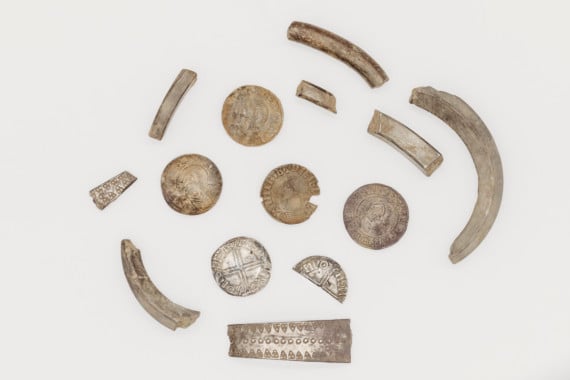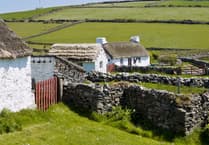The island’s rich Viking legacy has been further enhanced by the discovery of a hoard of artefacts.
The hoard was declared Treasure on Wednesday by the Coroner of Inquests, Jayne Hughes.
The discovery marks the third major treasure inquest on the island in less than six months, which reflects the Isle of Man’s tangible Viking legacy.
The hoard was discovered in April by metal detectorist Kath Giles whilst metal detecting on private land.
It is her fourth significant discovery since taking up metal detecting only three years ago.
The latest hoard consists of 87 silver coins, 13 pieces of cut, silver arm-rings or ’hack silver’ and associated artefacts.
Dr Kristin Bornholdt-Collins, an independent researcher and numismatist based in New Hampshire, USA, has confirmed that the hoard includes pennies minted in Dublin, England, modern-day Germany and the Isle of Man itself.
They are all around 2cm in diameter and around 1 gram in weight. Most of the coins date from around the AD 990s through to the 1030s.
Allison Fox, curator for archaeology at Manx National Heritage, said: ’This is a wonderful find which helps further our understanding of the surprisingly complex Viking Age economy in the Isle of Man and around the Irish Sea area.
’Like our modern day coins, many have an image of the monarch. On the Irish and Manx coins, the profile of King Sihtric Silkbeard who served as Norse king of Dublin around 989 to 1036 AD can be seen, appearing to be giving a wave from a thousand years ago.’
There have been discoveries of other mixed hoards of Viking Age silver coins and hack silver from the island.
All of these have been the result of deliberate deposition and many with the intention by the original owner to reclaim the hoard material at a later stage.
Dr Bornholdt-Collins said: ’The Northern Mixed hoard is the fourth Viking-Age coin hoard to be found in the Isle of Man in the last 50 years. It may have been added to over time, like a piggybank, accounting for some of the older coins, though for the most part it is a direct reflection of what was circulating in and around Mann in the late 1020s.
’Like the similarly dated, but much larger, Glenfaba deposit, found in 2003, the new hoard might be compared to a wallet containing all kinds of credit cards, notes and coins, perhaps of different nationalities, such as when you prepare to travel overseas, and shows the variety of currencies available to an Irish Sea trader or inhabitant of Man in this period.
’The two hoards together provide a rare chance to study the contents side by side, right down to the detail of the dies used to strike the coins.’
The hoard is now on display in the new Viking gallery at the Manx Museum, prior to being moved for review by the Treasure Valuation Committee, which meets at the British Museum.





Comments
This article has no comments yet. Be the first to leave a comment.